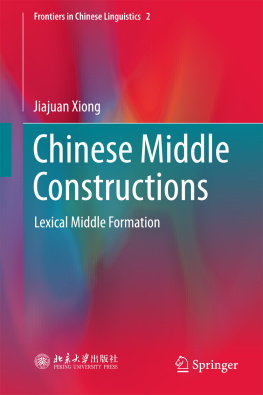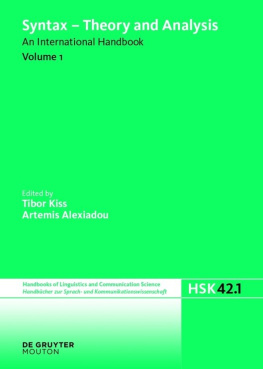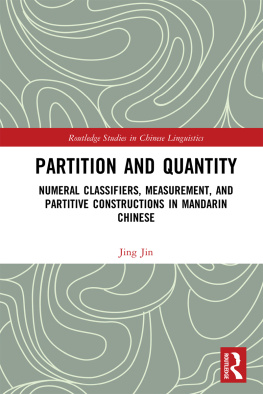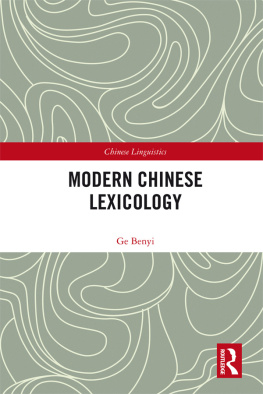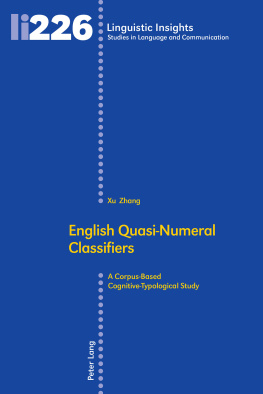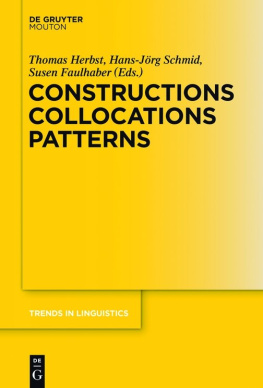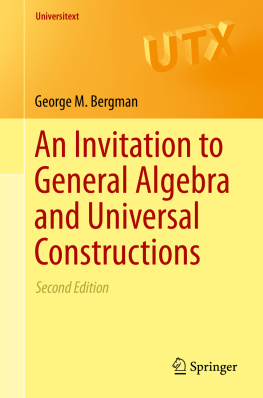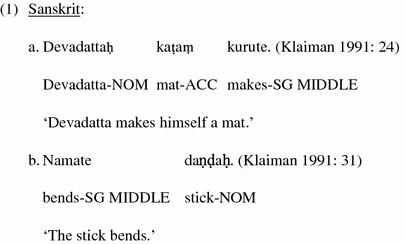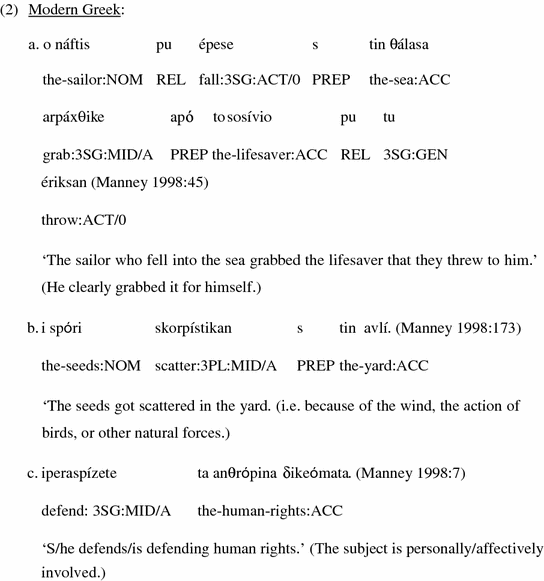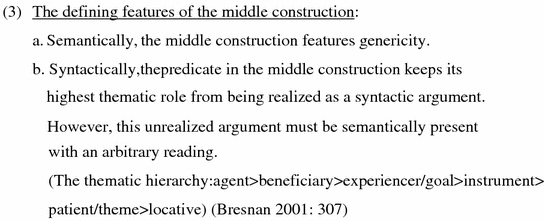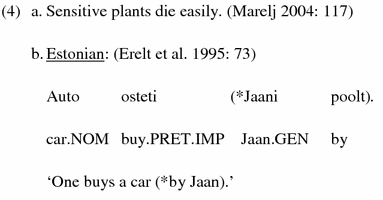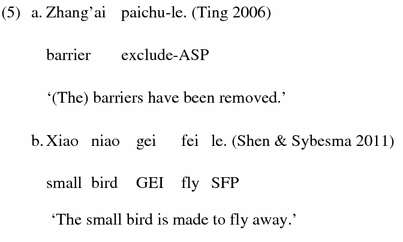This book is a study of the middle constructions in Chinese. In addition to Chinese, many other languages, geographically as well as genetically remote from Chinese, will be discussed for comparative purposes.
The term middle is widely used in the linguistic literature, though it is not always employed in the same sense. It usually collocates with either of two terms: voice and construction. However, middle voice and middle construction are not always clearly distinguished and sometimes they are even conflated simply as middles. This terminological confusion has resulted in the fact that data presented as middle data in the literature vary tremendously from one language to another, or from one author to another even in dealing with one and the same language. It is important, therefore, to clarify certain terminological distinctions, in particular the distinction between the middle voice and the middle construction, which will be the focus of this chapter.
1.1 The Middle Voice
This chapter starts with an examination of some of the definitions and/or descriptions of the middle voice found in the literature. What follows are two typical descriptions of the middle voice, each with its emphasis on different perspectives.
The implications of the middle (when it is in opposition with the active) are that the action or state affects the subject of the verb or his interests. (Lyons 1968: 373)
This definition assigns a crucial role to the subject in the middle voice, specifically in terms of its susceptibility to being affected by the process encoded in the predicate. Another key property appears to be reflexivity:
In certain languages, notably Ancient Greek and Sanskrit, a distinctive verb form, contrasting with both active and passive, which serves to express that the subject is acting on herself/himself (reflexive) or for herself/himself; the middle forms part of the voice system of such languages. (Trask 1993: 171)
The following examples from Sanskrit and Modern Greek illustrate these features of the middle voice.
In these two languages, the middle voice is encoded through verbal inflection. Semantically, the concepts of both affectedness and reflexivity are evident. Reflexivity is shown in (1a) and (2a), since the actions referred to there are done for the benefit of their subjects. As for the affectedness of the subject, it is manifested in different ways. Firstly, reflexivity is conceptually conducive to affectedness since the subject not only performs but also benefits from the action, as in (1a) and (2a). In (1b) and (2b), the subjects the stick and the seeds undergo the actions of bending and scattering and, consequently, these subjects are affected. In example (2c), the subject s/he is psychologically affected by infusing the action with personal affection. Syntactically speaking, (1a) and (2a, c) are transitive, while (1b) and (2b) are unaccusative.
I do not intend to conduct a comprehensive study of the middle voice in Sanskrit and Greek. However, the examples in (1) and (2) will suffice to lead to the conclusion that the middle voice is a morphological category and that this category is both syntactically and semantically heterogenous.
1.2 The Middle Construction
The middle construction will be used as a distinct term from the middle voice throughout this dissertation. This section explores the defining features of the middle construction, as well as other important characteristics, e.g., modality and adverbial modification.
1.2.1 The Defining Features
In contrast to the middle voice, the middle construction is primarily a semantic category but with specific syntactic properties. Therefore, the defining features of the middle construction are twofold: both semantic and syntactic.
1.2.1.1 Two Defining Features
I identify the two defining features of the middle construction in (3).
A middle construction should simultaneously satisfy the two features in (3). I take the examples in (4) to illustrate the point.
(4a) encodes genericity and it meets the condition of (3a). However, the predicate die , as an unaccusative verb, has its single theme role sensitive plants realized as the subject, which contradicts the syntactic feature of the middle construction in (3b). Therefore, (4a) cannot be treated as a middle construction. The Estonian example in (4b) is reckoned as an impersonal construction from the source it comes from. This sentence satisfies the condition of (3b), since the highest semantic role of the verb buy , the agent role in this case, is syntactically absent but semantically present. However, the meaning of (4b) is not generic, which defies (3a). This excludes (4b) from being treated as a middle construction.
Likewise, some Chinese examples, which have been referred to as middle constructions in the literature, as shown in (5a) and (5b), are dismissed from the category of the middle construction in this study. The reason is that neither (5a) nor (5b) is generic in meaning, and the implied agents in them cannot be understood as arbitrary.
1.2.1.2 More on the Two Defining Features
The second defining feature of the middle construction in (3b) requires the non-realization of the highest thematic role of a predicate. Crucially, this definition neither specifies any particular semantic role (e.g., the agent) that needs to remain unrealized nor designates any specific role (e.g., the theme) to be associated with the subject, although in most cases it is an agent role that remains implicit and a theme role that is realized as a subject in the middle construction. This under-specification is for the purpose of avoiding over-restrictiveness.
I cite two examples in (6) for illustration. In (6a), the subject he of the mental verb scare is an experiencer instead of a theme role. Moreover, it is a cause role but not an agent role that is syntactically absent but semantically present. This is because a mental verb like scare subcategorizes for a cause role and an experiencer role rather than an agent and a theme at the outset. As for the Dutch example in (6b), the subject of the verb lopen walk, i.e., deze schoenen these shoes, is an instrument instead of a theme role, since the verb lopen has no theme role to start with. Since our definition in (3) does not specify any particular thematic roles, the examples in (6a, b) can be well captured within the middle construction category.

